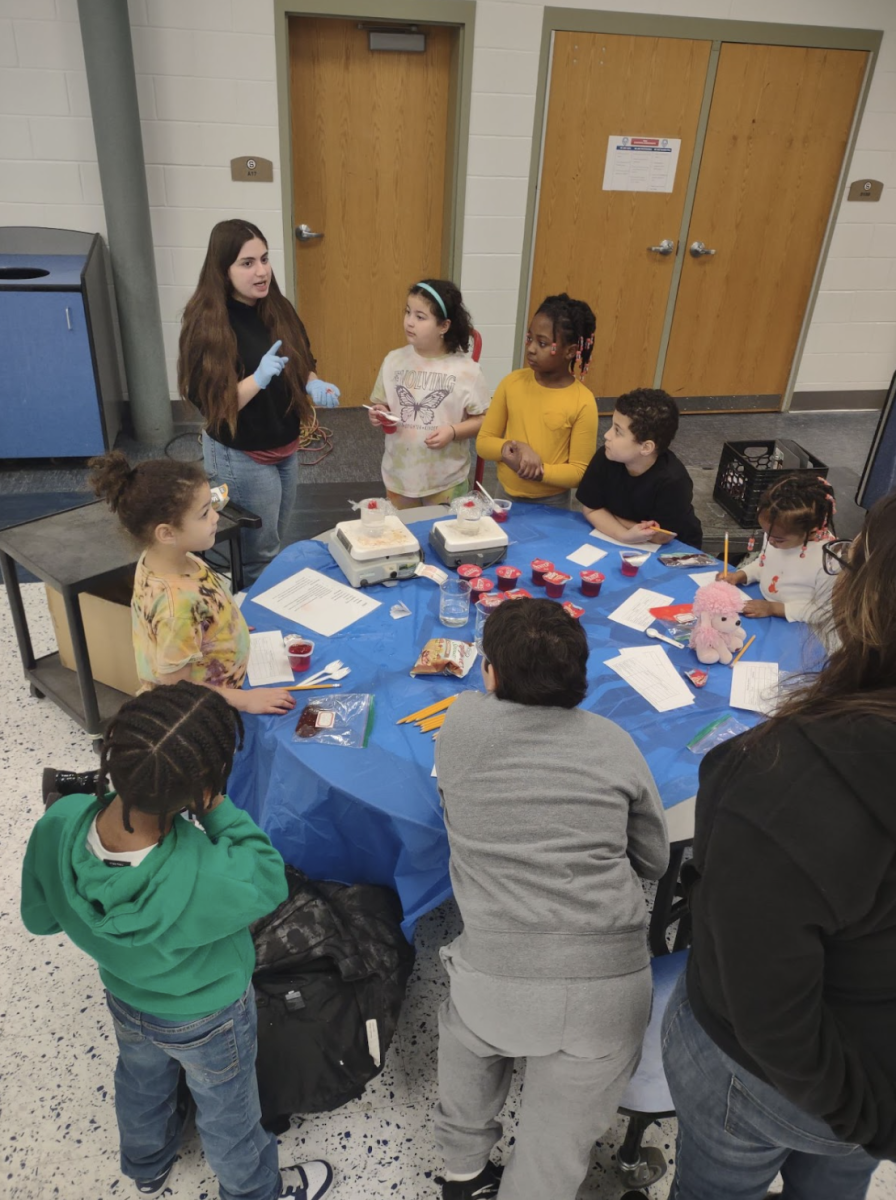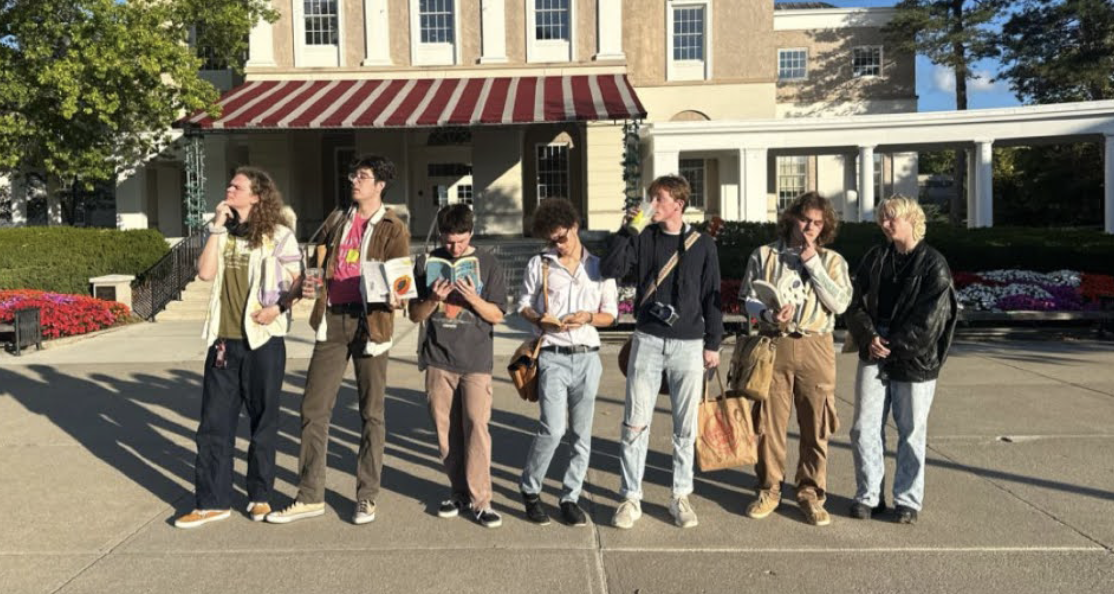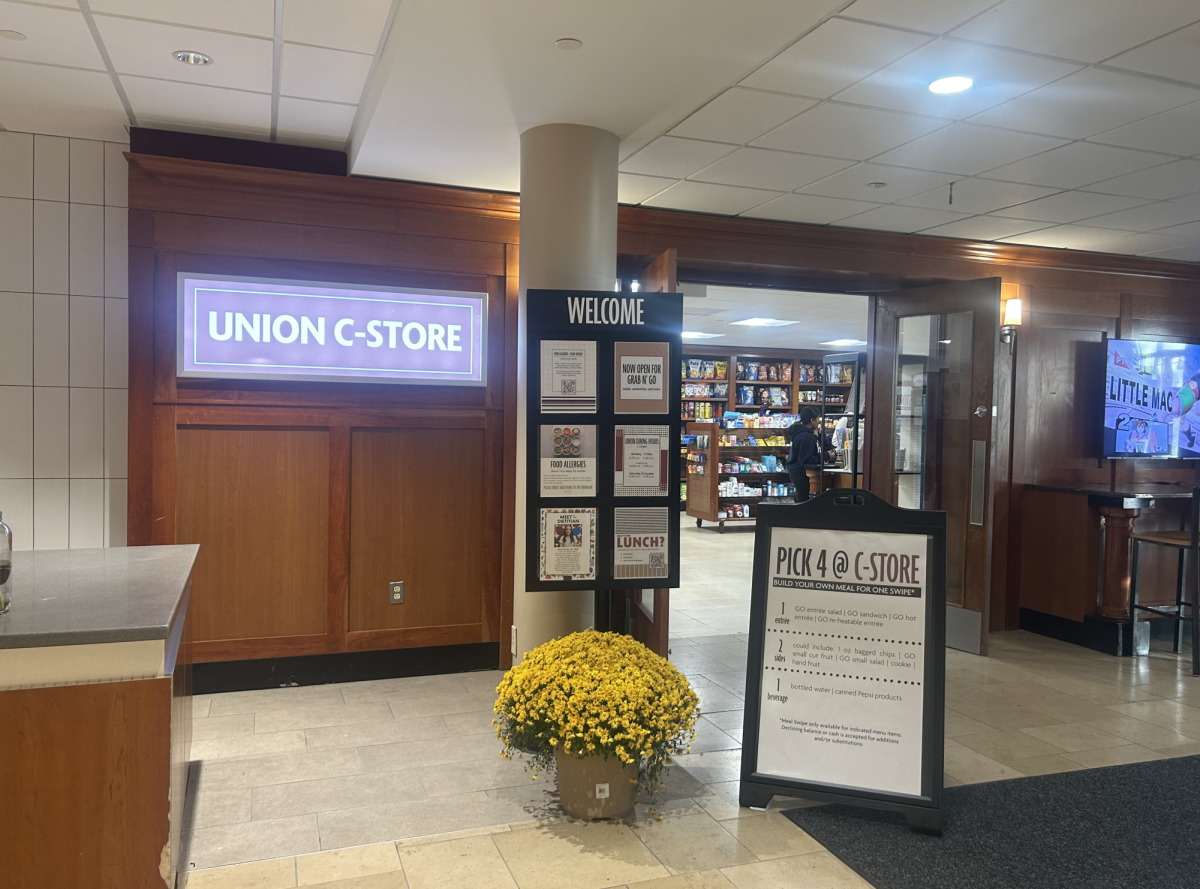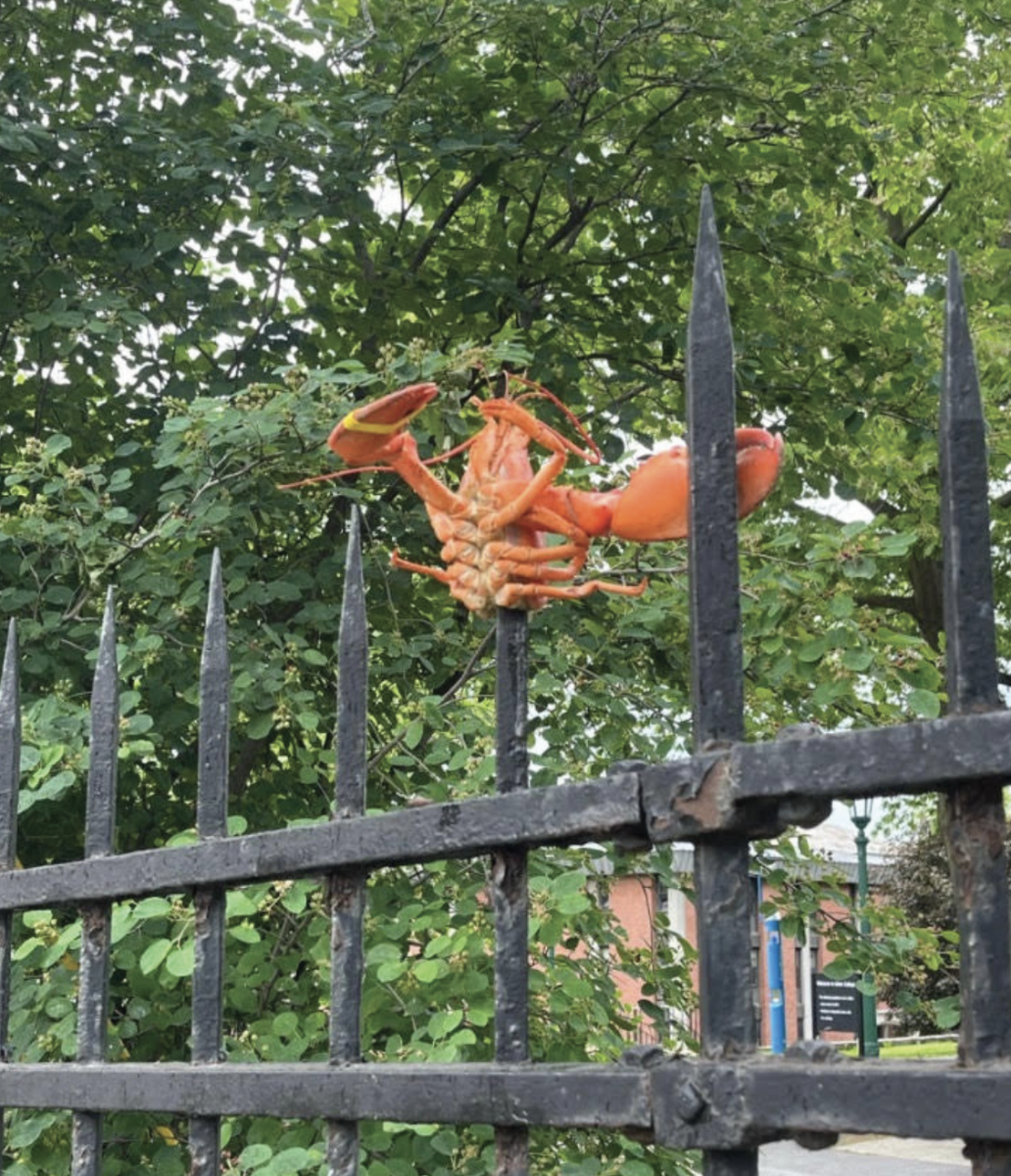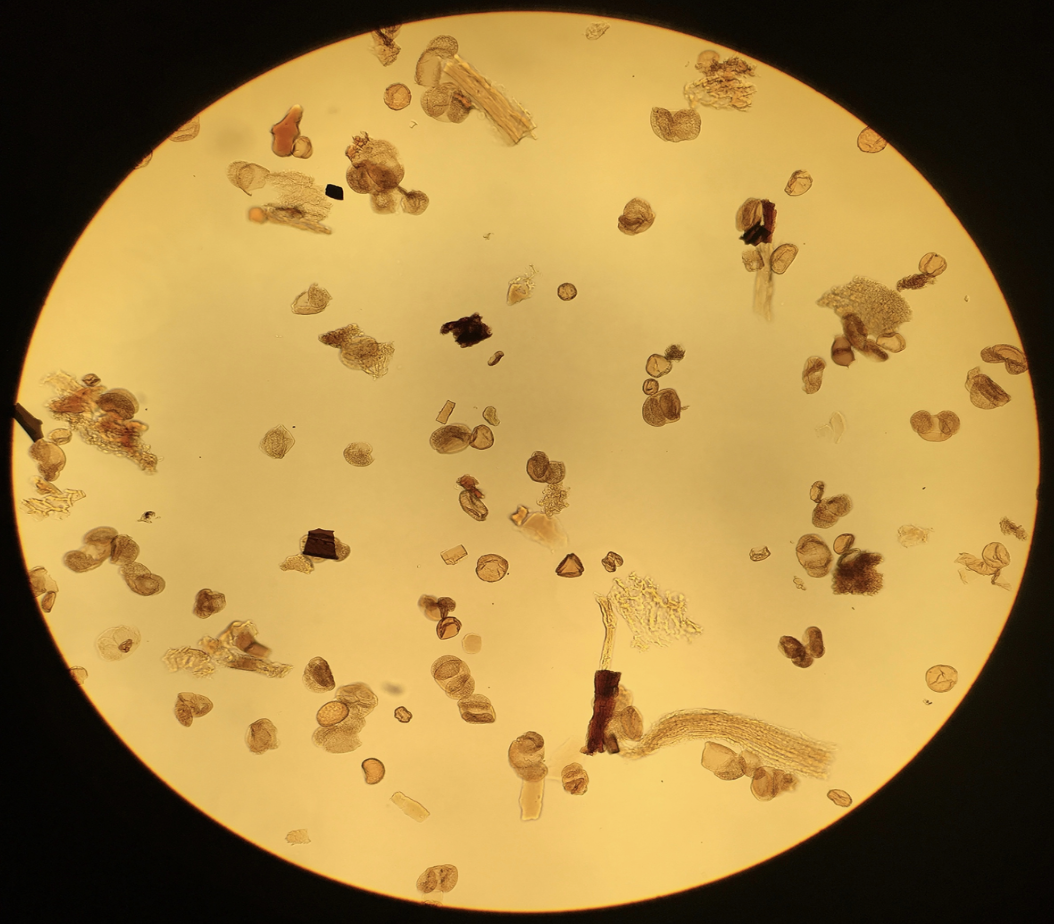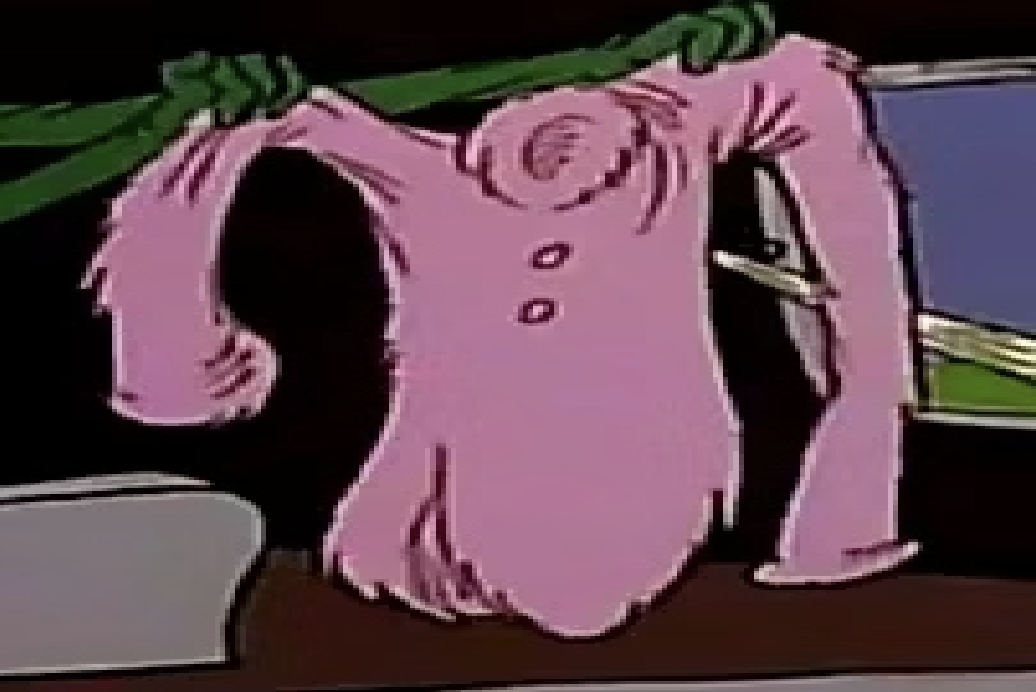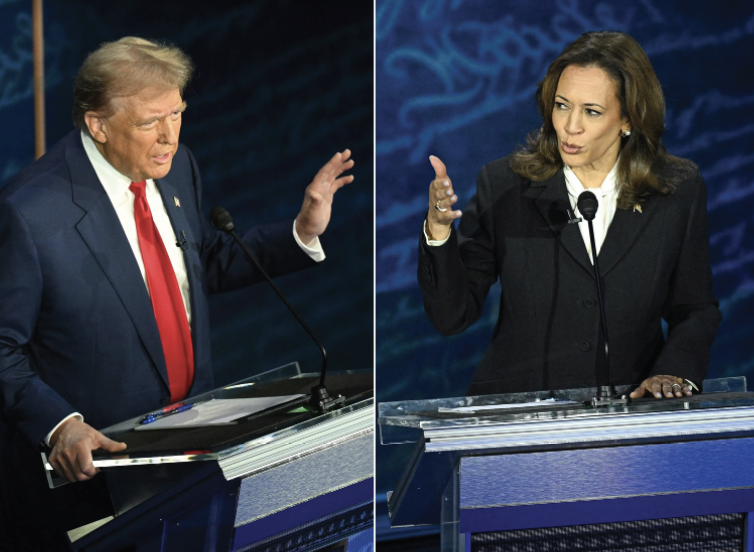As the alka-seltzer tablets dropped into the water bottle holding a gooey mixture of oil and water, five kids seated around the table held their breath. First, a few lone bubbles gurgled to the top, followed by a frenzy of smaller bubbles, popping with each kid’s chosen hue – determined by the food coloring they added to the mixture. Finally, the bottle reached its desired state – a steady stream of bubble migration that transfixed all eyes around the table. “So cool!” one of the first graders shouted, “Do more!” The activity was a favorite at the Chemistry and Biochemistry Club’s STEM Saturday event at MLK’s Elementary School and attracted many repeat visitors who got to take home their own lava lamp.
While the visual of the movements and colors resonated quickly with the event’s participants, the conversation about the science behind the activity held their attention. Based on the concepts of density and polarity, Union students explained how the project demonstrated why oil and water react peculiarly together – and why the introduction of a gas (through alka-seltzer) disturbs that relationship. For the kids, this hands-on activity was an avenue to deeper understanding – and excitement. “I’m going to tell my sister all about this when I get home,” one explained, “She’s going to love it!”
The event is part of a growing partnership between the Schenectady City School District and Union College’s Community Engagement & Outreach department. With a focus on youth engagement, programs taking place throughout the community feature hands-on activities that make scientific concepts tangible and fun – and allow Union students to demonstrate their passions and expertise. “We got involved with STEM Saturday because this was a way for us to tap into that enthusiasm and help kids learn and think scientifically,” says Sophia Pappas ‘25, president of the Chemistry & Biochemistry Club, “This monthly program gives children a way to learn hands-on by doing fun experiments, which is always a huge hit with them.”
These engaging activities help kids think creatively, and scientific experiments can help them understand and apply complex mathematical concepts and reasoning. In the City of Schenectady, infusing New energy into STEM programming is a focus area for community leaders. In 2023, Schenectady Schools Superintendent Anibal Soler, Jr. noted the value of supporting students through a curricular and co-curricular balance, including “recommending things like extended learning [time], afterschool, summer enrichment.”
At the end of the 2022-23 school year, 80% of the district’s elementary school students were found to be at least one grade level behind in their expected math proficiency – including 23% who were three or more grades below expected. These gaps are especially significant in the 4th and 5th grade classes, who experienced disrupted learning pathways during the
early parts of the COVID Pandemic. With these challenges in mind, the Schenectady City School District is seeking a variety of interconnected solutions that help spur interest in math and science learning. By utilizing the energy and passion of Union students and clubs, a diverse range of concepts can be tackled in both curricular and co-curricular spaces.
Last week, five Union College organizations traveled to Howe Elementary School to participate in their LEAP into STEM night. This spring, partnerships with other clubs and organizations on campus will bring Union students into classrooms to support teachers and administrators’ plans to move students toward academic proficiency. These efforts will be key to slow “summer slide”
– the loss of learning that occurs when kids are out of school – that especially impacts historically disadvantaged student groups. With the vision of local education leaders, Union College students make a difference for a district rebuilding from pandemic challenges.


